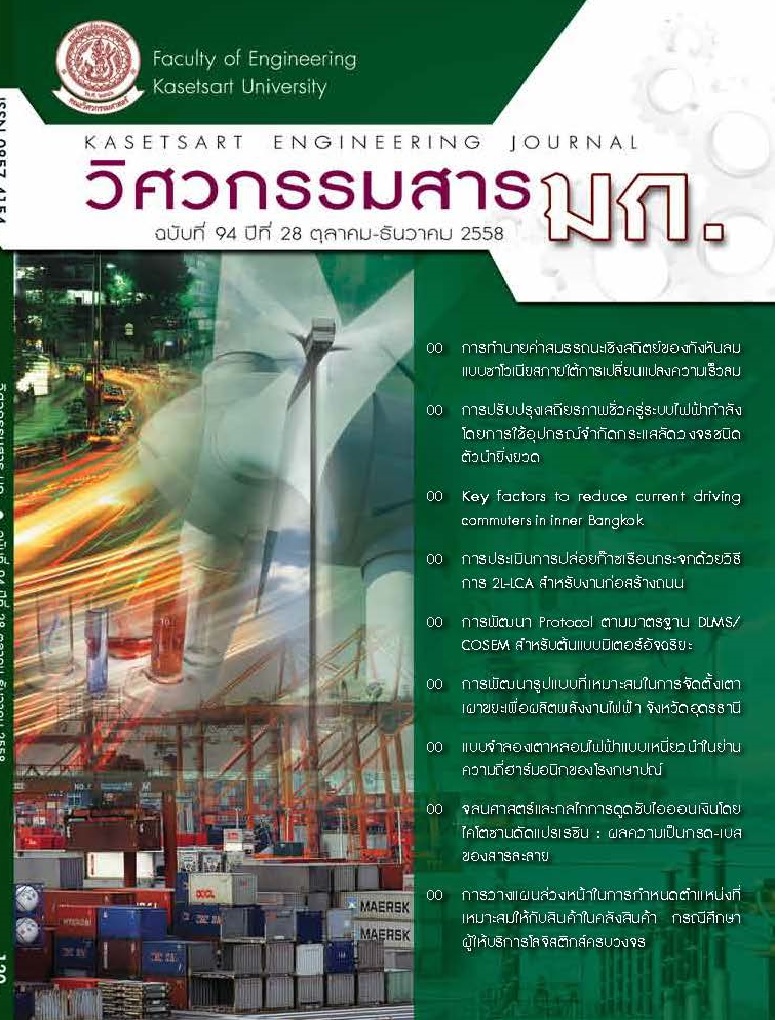การพัฒนารูปแบบที่เหมาะสมในการจัดตั้งเตาเผาขยะเพื่อผลิตพลังงานไฟฟ้า จังหวัดอุดรธานี
Keywords:
รูปแบบที่เหมาะสมในการจัดตั้งเตาเผาขยะเพื่อผลิตพลังงานไฟฟ้า, ความคุ้มค่าทางการเงิน, การยอมรับและการมีส่วนร่วมของประชาชน, model for appropriate development of incinerator to produce electricity, financial feasibility, acceptance and participation of publicAbstract
บทความนี้มีวัตถุประสงค์เพื่อเสนอแนะรูปแบบที่เหมาะสมในการจัดตั้งเตาเผาขยะเพื่อผลิตพลังงานไฟฟ้าของจังหวัดอุดรธานี การวิเคราะห์ความเหมาะสมทั้งด้านสิ่งแวดล้อม ด้านสังคมและการยอมรับ และด้านการมีส่วนร่วมของประชาชนด้วยการประยุกต์ใช้เลียวโอโพลด์แมทริกซ์ รวมทั้งวิเคราะห์ความคุ้มค่าทางการเงินด้วย IRR และ NPV ผลการศึกษาพบว่า ด้านสิ่งแวดล้อมทั้งผลกระทบต่อสิ่งแวดล้อมและสุขภาพ จากการกำจัดขยะมูลฝอย และสถานการณ์และปัญหาการกำจัดขยะมูลฝอยในปัจจุบันมีผลกระทบอยู่ในระดับปานกลาง ด้านสังคมและการยอมรับการจัดตั้งเตาเผาขยะเพื่อผลิตพลังงานไฟฟ้า มีการยอมรับอยู่ในระดับน้อย ในขณะที่การยอมรับการฝังกลบแบบถูกหลักสุขาภิบาลอยู่ในระดับมาก และด้านการมีส่วนร่วมและความพร้อมในการร่วมมือในด้านต่างๆ หากมีการจัดตั้งเตาเผาขยะเพื่อผลิตพลังงานไฟฟ้าอยู่ในระดับปานกลาง กรณีที่มีความคุ้มค่าในการลงทุนและมีความเป็นไปได้มากที่สุด คือ กรณีที่เงินลงทุนจำนวน 2,070 ล้านบาท โดยจัดการให้มูลค่าการลงทุนก่อสร้างโครงการลดลง 10% เท่ากับเงินลงทุนจำนวน 1,863 ล้านบาท ได้รับเงินสนับสนุนการลงทุนจาก ESCO Fund จำนวน 100 ล้านบาท ขยายพื้นที่ให้บริการให้รองรับขยะได้ 250 ตัน/วัน และคิดอัตราค่าบริการ กำจัดขยะ 485 บาท/ตัน ซึ่งให้ IRR เท่ากับ 15% และ NPV เท่ากับ 1,111.60 ล้านบาท
Model for Appropriate Development of Incinerator to Produce Electricity from Solid Waste in Udonthani Province
The objectives of the study is to propose the appropriate model for the project development of incinerator to produce electricity from Solid waste. The feasibility analysis on environmental and social acceptance, and participation of public was conducted using Leopold’s matrix. The financial feasibility of the project were calculated using IRR and NPV. Based on the results of the feasibility analysis using Leopold’s matrix, it was found that health and environmental impacts, and current situations and problems of solid waste disposal were at a moderate level. Public acceptance of the incinerator development project was at a low level, while that of a sanitary landfill was at a high level. The participation of public and cooperation if the incinerator project is developed were at a moderate level. Based on the study of the financial feasibility, the possible cost-effective investment details were as follows: investment of 2,070 million baht with the possible value reduction of 10 percent, equivalent to 1,863 million baht of investment, receive of financial support from ESCO Fund of 100 million baht, expand the service area to receive the solid waste of 250 tons/day, and collect waste disposal service of 485 baht/-ton of waste. In this case, its rate of IRR is 15 percent and NPV is 1,111.60 million baht.


